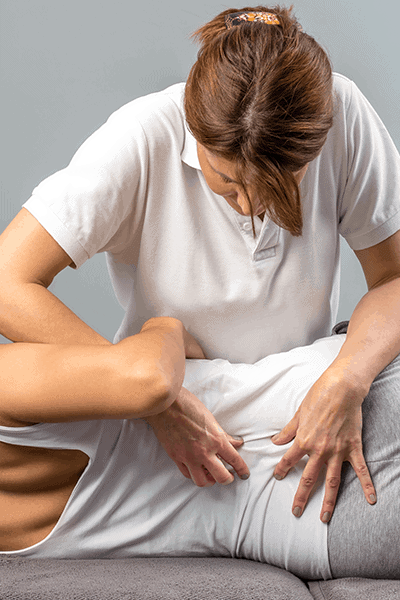Soft Tissue Therapy
We offer customized Treatment Plans for Your Unique Condition

What is a soft tissue injury?
Soft tissue injuries occur when there is trauma to the body where a bone is not broken. These injuries can be painful and limit function that effect tendons, muscles and/or ligaments. These injury types may be sprains and/or strains and can be treated with various modalities over the supervision of a clinical professional with a careful, unique plan of care.
If these injuries are left untreated, they can develop in the chronic injuries. Scar tissue can take over the injured area and lead to increased pain and serious functional impairments.
How is a soft tissue injury diagnosed?
Diagnosing a a soft tissue injury can be done in several ways. Clinical range of motion testing examines if there is a muscle spasms or restriction in range of motion. In general there are six ranges of motion to test for and there is exciting new technology, such as Miovision, which is a digital range-of-motion device which allows us to test muscle activity while engaged in motion to pin point trauma, restrictions or impingement. Clinically, this data is used to generate markers of improvement during treatment and distinguish effectiveness of clinical therapy.
How are soft tissue injuries treated?
Soft tissue injuries are treated with several types of modalities. Through clinically proven treatment protocols the incorporation of spinal manipulative therapy, rehabilitation exercise therapy, active resistance technique (ART), and heightened testing, treatment is expedited and getting patients back into action.
Spinal manipulation is used to increase range-of-motion at the joint space that typically stiffens after injury. The goal is to restore injured joints to the full range-of-motion. Muscle manipulation therapy and ART breaks down scar tissue and minimizes spasms in the muscle to avoid scar build up and inflammation post injury. Exercise rehabilitation therapy and therapeutic activities are performed to stimulate tissue regrowth after trauma. The combination of these treatment modalities put patients on the fast track to getting back to a healthy, active lifestyle!

Comments are closed.